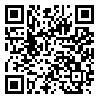BibTeX | RIS | EndNote | Medlars | ProCite | Reference Manager | RefWorks
Send citation to:
URL: http://ijn.iums.ac.ir/article-1-1287-en.html
Background & Aim: Night work could cause various disturbances in physiological, social and familial function because of changes in biological rhythms. Obesity which is associated with the increased risk of some disorders is considered as a possible adverse effect of night work in some studies. This study aims to determine the relationship between night work and anthropometric indices among nurses.
Material & Methods: This descriptive, cross- sectional study was conducted on 325 female nurses working in selected hospitals affiliated with Shiraz University of Medical Sciences with mean age of 27.78 ± 4.92 who were recruited using simple random sampling method. The instruments were standard measuring tape, standard weighing scale and a researcher made questionnaire. Anthropometric indices included Body Mass Index (BMI) and Waist to Hip Ratio (WHR). Night work was defined as the number of night shifts during last month and the number of years of night working. Statistical analysis was done using descriptive statistics, Pearson correlation coefficient and partial correlation using SPSS-PC (v. 11.0).
Results: The findings revealed that 70.7% of subjects had BMI of 18.5-24.99 and 51.4% had WHR of 7.5-8.49.
There was no statistical significant association between anthropometric indices and shift work duration or the number of night shifts per month, after omitting the effect of age.
Conclusion: The results would not provide enough evidence for the relationship between night work and obesity or overweight. Longitudinal studies with comparison groups, studies on different night work schedules and on male nurses are also recommended.
Received: 2012/08/14 | Accepted: 2014/08/25 | Published: 2014/08/25
| Rights and permissions | |
 |
This work is licensed under a Creative Commons Attribution-NonCommercial 4.0 International License. |




